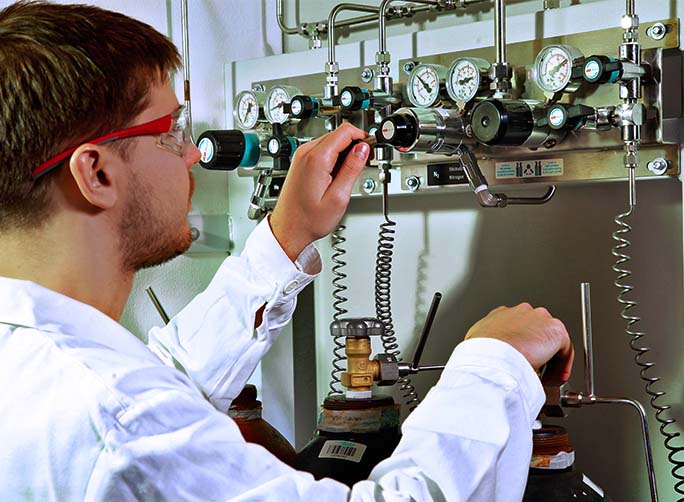Most pressure regulators fail due to contamination or wrongful sizing!
Published on 2 June 2016 by Pressure regulators are built to last. They should work when the need is there. They should last for many years. They should withstand many pressurisation and depressurisation cycles. They should handle the flow it is set for. And they should have minimal effects to flow pattern changes.
Pressure regulators are built to last. They should work when the need is there. They should last for many years. They should withstand many pressurisation and depressurisation cycles. They should handle the flow it is set for. And they should have minimal effects to flow pattern changes.
A pressure regulator manages the pressure of a flow. A higher inlet pressure is managed down to a controlled outlet pressure. The outlet pressure is managed by the person/system controlling it. A person can do this with a hand-knob or via an actuated line. The process itself can also do this, with an actuator and a signal.
Choosing the right regulator for the right application is not as easy as it seems. With the known inlet pressure, the process temperature, the flow and the desired outlet pressure, a things are determined, but that does not determine what regulator works best for you. It starts with determining what fluid it is and what its state is in when going through the regulator. LNG at -161degC at 1 bar pressure is most likely to be a cryogenic liquid; at 125degC and 1 bar it is most definitely a very cold gas or vapour. Mineral oil at 2degC needs more space than at 42degC.
In case it is a gas, the behaviour at changing conditions tells you a lot about what purity you may need; oxygen can do a lot of damage when ignited by an impurity. For oxygen use a special BAM certificate is in place ;-).
The system is relevant as well. Where is the regulator placed; is it right after a high pressure tank and the outlet pressure is at 5bar, a dual stage regulation will avoid the Joules-Thompson effect to happen on your regulator, or a heated regulator for cold LNG right before the heat exchanger, may be worth the investment.
Then there is the matter of relevance. How relevant is it to have no hysteresis or have a minimal initial droop? Do you find t convenient when in case a bottle depletes, the other takes over automatically, and even without the loss of outlet pressure.
Many of these questions need to be answered when choosing the regulator you REALLY need. And to avoid overpaying!
 Druva, part of the GCE Group, is one of the global leaders in the field of speciality gas equipment. Druva designs, manufactures and sells regulators, and knows as no other how to help you. Independent of the industry you are in. If you are in building medical panels or gaseous fire protection systems, every customer will find the same expertise and is treated as equally important.
Druva, part of the GCE Group, is one of the global leaders in the field of speciality gas equipment. Druva designs, manufactures and sells regulators, and knows as no other how to help you. Independent of the industry you are in. If you are in building medical panels or gaseous fire protection systems, every customer will find the same expertise and is treated as equally important.
Close dialogues between users and designers enable meeting the requirements of the market. Years of experience, the latest tests and measuring equipment and CAD technology build a basis for solutions beyond the usual expectations. Therefore, the GCE Druva Technology is the sure foundation for solutions matching the customer’s individual needs.
We would like to invite you to send us your pressure regulator requirements and we will make you a sizing. Please send your requests to: regulator@gcegroup.com and we will contact you shortly.
